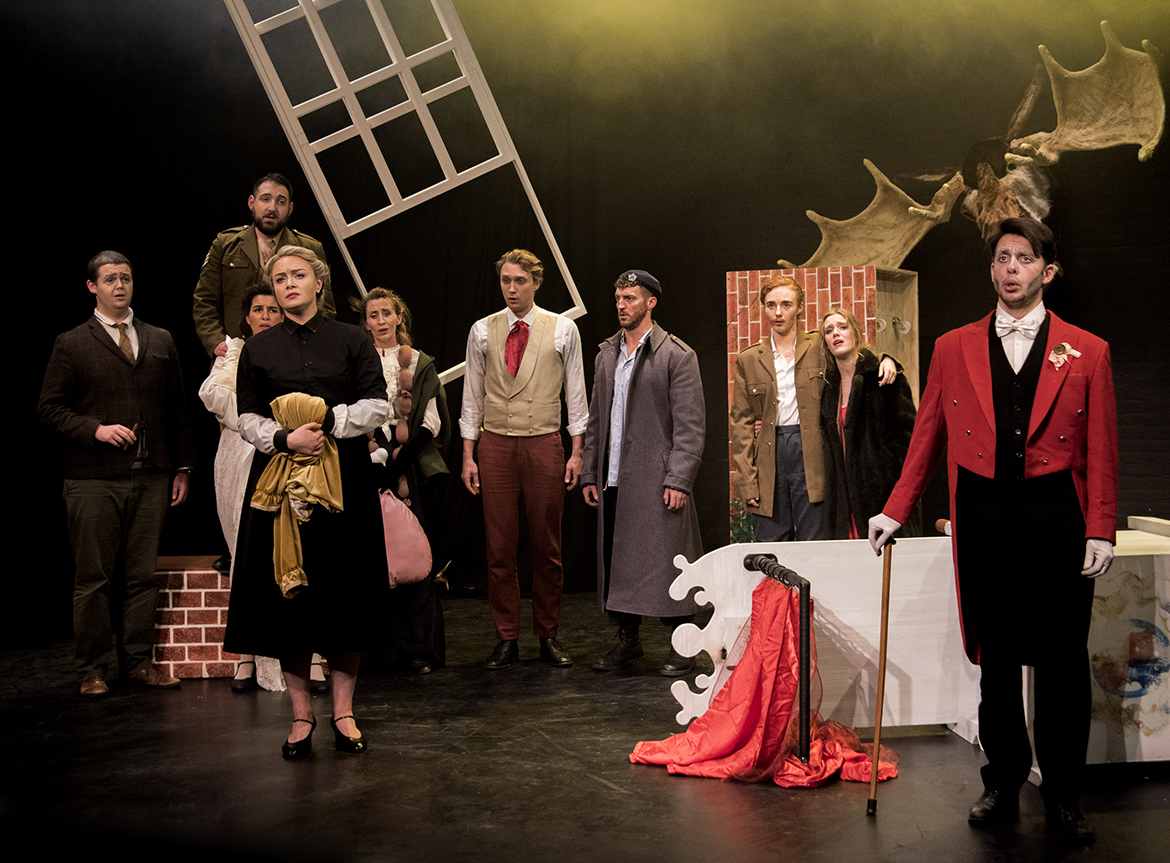 United Kingdom Mozart, Le nozze di Figaro: Soloists; Chamber Orchestra of Hampstead Garden Opera / Thomas Payne (conductor). Jacksons Lane Theatre, Highgate, London, 5.11.2021. (CC)
United Kingdom Mozart, Le nozze di Figaro: Soloists; Chamber Orchestra of Hampstead Garden Opera / Thomas Payne (conductor). Jacksons Lane Theatre, Highgate, London, 5.11.2021. (CC)

Production:
Director – Julia Mintzer
Set Designer – Charles Ogilvie
Sound and Lighting designer – Jonny Dancinger
Choreographer – Carmine de Amicis
Dramaturg – Ben Poore
Cast:
Figaro – Louis Hurst
Susanna – Shafali Jalota
Count Almaviva – Thomas Chenhall
Countess Almaviva – Camilla Harris
Cherubino – Esme Bronwen-Smith
Basilio / Don Curzio – Martins Smaukstelis
Bartolo – Hector Bloggs
Marcellina – Becca Marriott
Antonio – Owain Evans
Barbarina / Bridesmaid 2 – Astrid Joos
Bridesmaid 1 – Phoebe Smith
Chorus – Anna Simmons, Angela Yang
Mozart’s eternal opera buffa Le nozze di Figaro fizzes gloriously in this production from Hampstead Garden Opera. The production is a miracle of maximal effect with minimum material (the stage remains constant throughout) thanks to superb lighting by Jonny Dancinger; space is superbly, imaginatively used, with equally superbly imaginative choreography by Carmine de Amicis.

A reduced orchestra brings its own illumination to the process: suddenly a string quartet can be the accompaniment, gracious, elegant, while single winds and horn add Mozart’s colours beautifully. Bravo to all concerned (the small orchestra is to the right of the stage in two tiers) particular praise perhaps for first violin Janell Yeo, single-handedly negotiating her tricky lines for the entire event with aplomb. The conductor was Thomas Payne (who also conducted Holst’s Sāvitri for HGO back in August 2020). A former member of the Jette Parker Young Artists Programme at the Royal Opera House, Covent Garden, Payne is clearly a name to watch. His clarity is remarkable, not least in the way he handles the accompanied recitatives. Elspeth Wilkes plays continuo on an electronic keyboard on harpsichord settings – somehow, it works brilliantly, due to Wilkes’s lightening reactions to her singers.
The whole thing knits together thanks to the fact this is a company effort. Mixed-period costumes add to the sense of a mix of opera buffa and English farce (and let’s face it Figaro has plenty of elements of the latter about it). Hides and reveals were slick as can be, especially impressive on the first night. The cast (there are two) was clearly carefully chosen to maintain a high level, showcasing some of the finest young talent (both singing and acting) around the UK today.
The Figaro and Susanna, Louis Hurst and Shafali Jalota respectively, offered a match of equals, Hurst has an impressive list of roles already under his belt, and this was a fine, confident assumption. Hurst’s voice is firm, confident, while his acting is full of life. British-American soprano Shafali Jalota delights as Susanna; her roles already include Cavalli (Clori, L’Egisto) and Puccini (Suor Genovieffa, Suor Angelica) so there is a range there as well. Her Susanna was fun but also had pose, her pitching pinpoint; Jalota’s ‘Giunse alfin’ from the final act was particularly noteworthy, leading to the most eloquent ‘Deh vieni, non tardar’.
There was one role that stood out above all others though: and it’s the role that normally gets a token reference in reviews for the so-called ‘pin aria’. And yet Flemish soprano Astrid Joos elevated this role considerably. She has real stage presence as well as a lovely, clear voice and the ability to meld into a large company. This was a notably feisty Barbarina. I look forward to seeing how this singer develops.
A recent Masters graduate at the Royal Academy, Thomas Chenhall’s Count took a role that can be one-dimensional and added nuance as well as projecting the voice superbly (I can’t imagine Jacksons Lane is the most grateful acoustic for singers.) His recanting at ‘Contessa perdono’ was, for once, moving and convincing. He was matched by the superb lyricism of Camilla Harris’s Countess, her two big numbers the epitome of Mozartean charm and emotional depth. Obviously a young Countess, her voice has real command; and she was able to bring a light touch to the role at times, too.
The Cherubino of Esme Bronwen-Smith was brilliantly in the spirit of buffa, ever amusing and – and I mean this in the nicest way possible – what a convincing male she makes, thanks no doubt to HGO’s superb costume and make-up department. An absolute masterclass in character acting, her ‘Non so più’ was deliciously light. Becca Marriott was a hugely characterful Marcellina; Latvian tenor Martins Smaukstelis took on the roles of Basilio and Don Curzio, his voice often honeyed, while Hector Bloggs was a confident Bartolo.
Subtitles were sometimes funny (‘Bloody hell’ for ‘O dio’) and sometimes, well, absent. But that last was a first night hiccup, I am sure. There is something symbolic about parts of Jacksons Lane itself being only partially open and yet once one negotiates the way in and to the stage, there is life itself, vibrant, glowing, continuing. A metaphor for our times, perhaps, as well as proof positive of the eternal durability of Mozart’s masterpiece. A great evening.
Colin Clarke
